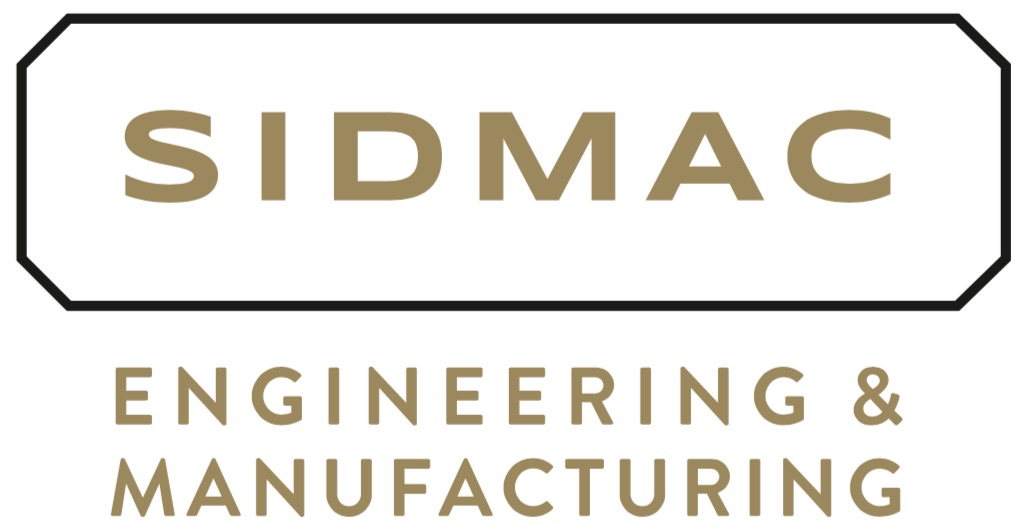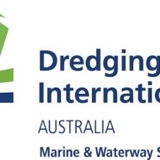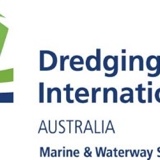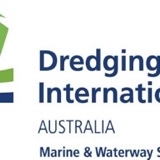Information
-
Document No.
-
Audit Title
-
Client / Site
-
Conducted on
-
Prepared by
-
Location
-
Personnel
Certificates
-
Safe manning document
-
Bulders attestation
-
Trading permit
-
<br>Certificate of nationality
-
Safety management certifcate
-
Permit for carriage of passengers
-
National passengership safety certifcate
-
National cargoship safety certifcate
-
Sewage certifcate
-
Deklaration of the vessel Being asbestose free
-
Statement of compliance (only classed vessels)
-
Document of compliance (ISM)
-
Insurance letter Crew
-
Insurance P&I
-
Insurance hull and machinery
-
Liability insurance (if aplicable)
-
Tonnage certifcate
-
Radio licence
-
Antifouling certifcate
-
Freeboard marking/plan
-
Load Line certifcate
-
Annual testing of EPIRB
-
Divination chart for magnetic Companys
-
Crane survey report (max 1 year)
-
Lifting gear certificates<br><br>
-
Liferafts certifikatets (max 1 year)
-
IAPP certifcate (or statements of compliance)
-
EIAPP certifcate (for each Engine)
-
Test report Fall arest equiptment
-
Fire fighting equiptment test report (max 1 year)
-
Survival suites (3 year rec)
-
PAT test report (uk only)
-
Self contained Breaking apparatus
-
HRU certificates
-
GMDSS service agreement
-
Service agreement machinery
Weather tight integrety
-
Are there blanks available for port ligths/holes below deck.
-
All doors above weather deck, with access to spaces below deck weather tight and able to operate from bóthar sides.
-
Possibility to secure all openings to prevent ingress of water<br>
-
Weather tight closures to ventilators in order and working.
-
Does the hull and structure appeal in good state of repair.
-
Is there any class certificates for the hull available.
-
Where bulwarks is fitted are there suficient freeing ports.
-
Are Inlets and discharges in the hull fitted with suficient seacocks or means of closure.
-
Is there evidence of water leaking into the vessel.
Machinery and electrical
-
Are Engine rooms/ machinery spaces clean and well maintained.
-
Are vent pipes for fuel tanks protected from ingress of water (gooseneck or other)
-
Are there flame arrester in fuel vents.
-
Are there spill trays or other means to prevent spillage of fuel.
-
Are ther Quick closing valves or other means to isolate fuel supply.
-
Are there fuel leaks in machinery spaces.
-
Are the bilges free from Oil.
-
Are there safe means to isolate elecrical supply.
-
Are electrical systems protected from water.
-
Are battery spaces adquately ventilated.
-
Is the battery cut off switches operational.
-
Are batteries firmly secured to prevent movement.
-
Are there suficient emergency lightning to allow essential work to continue, and escape from all rooms.
-
Are there effective emergency lightning to illuminate survival craft launching and embarkation areas, and man over board rescue equiptment, and areas.
-
If stearing by remote control, are there means of emergency steering.
-
Are there at least two fully working bilge pumps.
-
Is at least one bilge pump available for duty in an emergency. (Pumps and power source in two differentiere compartments)
-
Are there bilge alarms in water tight enclosed spaces.
-
Are operating manuals available for machinery.
-
Are adequate tools and emergency spares available for the machinery.
-
Are maintenance records available for on board equipment.
Stability
-
Does the vessel have approved stability information booklet.
-
Is a competent person on board to calculate the vessels stability.
-
Are there any stability records to show the effects of adding or removing loads from the vessel.
-
Are the Crew familiar with issues with renards to winches and lifting operations.
Freeboard
-
Is the vessel marked with deck line and freeboard mark.
-
If no freeboard mark how is the vessels max draft determined.
Escape
-
Are there at least two means of escape from any manned/ occupied space.
-
If there are not at least two means of escape, are there fire detectors.
-
Are means of escape clearly marked.
Fire
-
Are fire detectors where fitted working.
-
Are fire dectectors tested on a regular basis.
-
If no fire dectectors how are fire dectected.
-
Is the fire pump working.
-
Can the hose deliver a jet of water to any part of the vessel.
-
Does the jet and spray nozzle work on the fire hose.
-
Are there at least two multi purpose fire extinguishers on board.
-
How is a fire in engine room extinguished.
-
Are there at least two fire buckets with lanyards.
-
Is there fire blankets in galley and cooking areas.
-
Do the Crew know how to operate fire fighting equipment.
Radio
-
Is there a DSC radio installed.
-
Is a medium frequency single side band (MF SSB) radio telephone with DSC fitted.
-
Is at least one EPIRB fitted
-
Is a SART fitted.
-
Is NAVTEX fitted if operating in NAVTEX areas.
-
Is there a person on board with an approved certificate for operation of radio equipment.
-
Are cards available giring a clear summary of the radio telephone distress, urgency and safety procedures.
-
Are there clear instructions for the operation of hand held VHF.
-
Are the vessels Call sign and radio station identity displayed.
Navigation equipment
-
Are the navigation ligths working.
-
Are there means of making efficient sound signals.
-
Is the all round anchor ligths working.
-
Are the NUC ligths working.
-
Are the NUC shapes available.
-
Does the magnetic compass have a valid deviation card.
-
Does the light work in the magnetic compass.
-
Is a GPS available.
-
Are there means of measuring the distance covered.
-
Is the echo sounder working.
-
Are curent corrected charts available.
-
Are curent tide tabels available.
-
Is there a tidal stream atlas available for the area of operation.
-
Is there a copy of list of radio signals available for the area of operation.
-
Is a copy of international code of signals available.
-
Is an efficient waterproof signalling lamp available, and suitable for morse signalling.
-
Is an efficient radar reflector fitted.
-
Is there a working search light for operation in darkness.
-
Does the vessel have suficient anchor cables for area of operation.
Navigation
-
Is the vessel provided with operator policy statements, instructions and procedures with regards to safe navigation.
-
Does the vessel have wriitten procedures for entry to a 500 m zone.
-
Are up to date navigation warnings and weather forecasts available.
Accomodation
-
Is heavy equipment in accomodation secured.
-
Is there efficient ventilation system for enclosed spaces that may be entered by personell.
-
If vessel is at sea more than 24 hours answer following.
-
Is there adequate ventilation in all accomodation (incl AC if appopriate)
-
Is there adequate lightning
-
Is there adequate supply of fresh drinking water
-
Is there emergency drinking water (two l Per person)
-
Is there a bunk or cod for for all those who will be on board.
-
Are there adequate toilet facilities for the proposed POB
-
Are there adequate stowage facilities for personal effects for all proposed POB.
Protection of personell
-
Are there safe means of acces to the vessel.
-
Are there adequate guardrails around deck.
-
Are there at least two safety harnesses on board and for all those who are to work on deck.
-
Is the surface on working deck non slip.
-
Are personell provided with protective clothing appropriate to prevailing air and sea temperature.
-
Are there survival suits for each person when working in waters below 10 degree celcius.
-
What measures has been taken to prevent personell to be exposed to excessive noise.
-
Are noise warning signes posted as appropriate.
-
Is a safety briefing given to all personell who og on a voyage.
-
Are there wriitten emergency procedures for; fire, collision, grounding, explosion, gas or toxic vapour realease.
-
Are medical stores provided.
Crane
-
Is there a valid test certificate
-
Is there a competent crane operator on board.
Manning
-
Doges the person in charge hold an appropriate certificate of competance as required by flag state.
-
Is there a second person dermed expirienced by the person in command.
-
Is there a person on board familiar with the operation and maintenance of propulsion machinery.
-
Is there at least one person on board who holds a certificate for the operation of the radio station.
-
Is there at least on board who holds a medical first aid certificate.
-
Has the person in command an approved stability course for workboats.
-
Has the person in command and any member of the Crew who is liable to use radar undertaken appropriate training in its use.
-
Are the Crew able to demonstrate safe operation of LSA and FiFi equipment.
Reporting
-
Are accidents and incidents reported and investigated in accordance with flag state.
-
Have there been any accidents or incidents in the last 12 months.
-
If there has been any incidents or accidents, are reports available.
Clean seas
-
What arrangements are in place to prevent the discharge of sewage in prohibited areas.
-
How are prohibited areas identified.
-
What arrangements are in place for retention of garbage on board.
-
What arrangements are in place for handling of oily waste.
-
What arrangements are in place for prevention of discharge of oil or oil contaminated water.
Life saving appliances
-
Is there liferafts on board for all proposed POB.
-
If no liferafts, what means are in place to abandon ship.
-
Does the liferaft have a current certificate of examination.
-
When is the liferafts due for next examination.
-
Does the liferafts have HRU with valid date or certificate.
-
Are there sufficient lifebouys for the vessel and operation.
-
Are there sufficient lifebouys with light.
-
Do the lifebouys have heaving lines.
-
Are there lifejacket for all persons on board.
-
Are there parachute flares on board.
-
Are there hand held red flares on board (12 pcs)
-
Are there at least two smoke signals, buoyant or hand held.
-
Is there TPA for all persons on board.
-
Are there effective means to recover a person from the water.
-
Are life saving signalling tables available.
-
Is there means of sounding general alarm in case of emergency.
-
Does the general alarm work satisfactorily.
-
Is there manuals for LSA equipment.
-
Are there instructions for maintenance of LSA.
-
Is a record of emergency drills maintained.
-
Is there an up to date on shore emergency response plan.
Mooring
-
Are there adequate mooring points on the vessel.
-
Is there sufficient mooring lines in good condition.
Towing
-
Are there a suitable towage point on the vessel allowing it to be safely towed in the event of an engine failure.
-
Are there suitable towing lines.
Boat hooks
-
Is there at least one boat hook available for recovering lines, or to assist in rescuing personell who fall over board.
Anchor
-
Is a suitable sea anchor available.
-
If no is there an anchor required for the size of vessel and area of operation.












